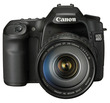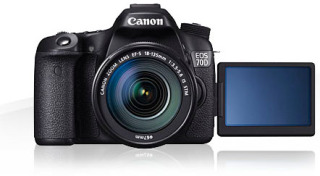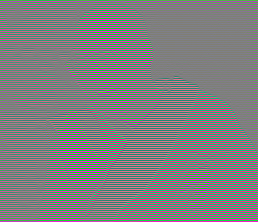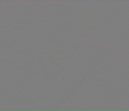Thursday, July 11. 2013
DSLR upgrade considerations

It took me some time to write a post about photo gear.
As my Canon EOS 40D is now really becoming old, I’m looking for an upgrade. Sadly, my photography hasn’t evolved much, so I most probably won’t wait for the 7D Mk II (if that one still makes sense, given the 6D) and will stay with their prosumer x0D line. Surprisingly, it took Canon three years to introduce a successor to the 60D: The EOS 70D. Although I originally considered the 60D a downgrade within that line, my view has changed with its successor: The reduced weight is not something negative, the reduced size is minimal, the plastic housing at least has got weather sealing, and the swivel screen perfectly fits the camera’s video capabilities. I’d get (compared to the 40D):
- 20 MP instead of 10 MP,
- DIGIC 5+ processor instead of DIGIC 3,
- ISO 12800 max. instead of ISO 1600,
- 19 AF points instead of 9,
- Dual-pixel AF in Live View instead of a manual trigger with mirror flip,
- 98% viewfinder coverage instead of 95%,
- [Update: Viewfinder with switchable gridline overlay and electronic level,]
- HD movies instead of no movies at all,
- HDMI output instead of plain old analog,
- Weather sealing instead of none,
- High-res swivel touch screen instead of low-res static plain LCD,
- Built-in Wi-Fi for remote operation using Canon’s smartphone app(!!),
- Built-in flash as off-camera remote flash controller!
- Continuous shooting with a rate of 7 fps instead of 6.5 fps, but the RAW image burst goes down from 17 to 16 and the JPEG burst from 75 to 65.

So, quite a jump in technology during the last six years. I plan my purchase for the end of this year.
Tuesday, July 9. 2013
Cheap time lapses, II


Some quotes of myself from four years ago:
“Cheap” should mean here that you don’t need to spend money on extra hardware like a remote timer or on extra software like Windoze [...]
My hope is that I can use gphoto2 with an Android smartphone.
Somehow this is still a Linux-post, as Android simply is the most popular Linux distribution to date. Btw, PC and smartphone don’t count as dedicated extra hardware. But you might need to purchase an app and a USB adapter:
Meanwhile I use the awesome DSLR Controller on my Android smartphone in USB host-mode to create time-lapse picture sequences on my aging Canon EOS 40D—a thing that wouldn’t work with a diePhone, I guess. This app can do a lot more, of course. Up to now, you have to rely on USB. However, as Wi-Fi enabled DSLRs are appearing, there is some hope to get rid of that cable and adapter one day; Canon’s own EOS Remote app doesn’t support time-lapse shooting yet. [Update: To equip your camera with Wi-Fi, you could hack an Android TV stick!]
The most elegant solution would of course be located within the camera itself. Canon is still sleeping in this regard, but at least there’s the third-party Magic Lantern firmware add-on for some newer models, also sporting an intervalometer. My 40D is not (yet, but I guess won’t ever be) supported.
You should still set the camera to a resolution at or slightly above the HD 1080p resolution, which in my case is 1936×1288. You should fix the aperture and ISO values, and probably also the exposure time. [Update: In addition, fix the white balance. Also, don’t forget to cover the viewfinder with the eyepiece cover on your strap, as otherwise you might get different exposures that result in flickering!]
After getting the images to your Linux machine, you need to crop the pictures from 3:2 to 16:9 (in my case 1936×1089) or crop a 1920×1080 patch directly. You can do this with a simple script using ImageMagick:
[ ! -z “$1” ] && v=$1 || v=0
[ ! -z “$2” ] && h=$2 || h=0
for img in *JPG; do
num=$(echo $img | tr -d ’[:alpha:]_.’)
convert $img -crop 1920x1080+$h+$v img_${num}c.jpg
done
(GNU Parallel didn’t work for me.) You can then issue
-nosound \
-ovc x264 \
-x264encopts nocabac:level_idc=41:bframes=0:bitrate=9500:\
global_header:threads=auto:pass=1 \
-mf type=jpg:fps=24 \
-vf dsize=1920:1080:2 \
-of lavf -lavfopts format=mp4 \
-o timelapse-f24-1080.mp4
to render an HD video into a format that’s also recognized by your smartphone.
Finally, you could use OpenShot to edit your videos and add background music. (You could of course compose that music yourself using FOSS as well...)
Wednesday, September 1. 2010
A peek on current DSLR tech, II

Apparently, it’s time for my yearly follow-up on Canon’s releases.
Canon announced the EOS 60D. It’s interesting that their prosumer “x0D” line now got downgraded in a certain sense: This DSLR became more similar to a cheaper bridge camera, with a vari-angle LCD, less weight, plastic housing, fewer fps and SD cards instead of CF. This is probably a measure for increasing the difference to their EOS 7D, which should attract the more dedicated amateur.
However, there won’t be a 7D or 5D Mk II in my hands at all. My 40D is just working fine for me; unfortunately, I hardly found time to hold dedicated photography sessions apart from the obvious ones with my child. There’s still a lot of potential with and within my camera, although the maximum (unboosted) ISO of only 1600 is rather limiting sometimes, given that one could have ISO 6400 with current models.
And the limited number of occasions I mentioned is also a reason why there was no “lens p0rn” in my blog recently. Although I had predicted the purchase of a tele lens for fall 2008 and then for the end of 2009, I didn’t buy one, as I rarely missed such a tool. However, there seems to be the ultimate candidate for me to finally put one into my bag at the end of 2010: Canon’s newly introduced EF 70-300mm f/4-5.6 L(!) IS USM. It’s rather compact and doesn’t possess the disputed design of their aging 100-400mm. It appears to me as a 70-200mm f/4 “with the 1.4× extender included” in some sense. It’ll be available by October for €1,400. Let’s see if that’ll be my Xmas present for me, or if I rather go for a completely different gadget (namely an Android tablet).
Thursday, February 25. 2010
Work around the image scaling "bug"


Eric Brasseur explained a “bug” in the scaling algorithm of current image processing software. It’s not really a bug, technically, or mathematically. Calculating the numerical average of the surroundings of a pixel as the new color value is a pretty correct approach to scale an image down—if it’s seen as a data matrix. Rather, it’s visually not the thing you’d expect.
Technically speaking, the problem is that “the computations are performed as if the scale of brightnesses was linear while in fact it is an exponential scale.” In mathematical terms: “a gamma of 1.0 is assumed while it is 2.2.”
Here’s an example of what might occur:
The wrong way:
- Take this image as a start:

- Simply scale it down to 50%:

Obviously, this might not be what you intended.
The right way:
Continue reading "Work around the image scaling "bug""
Saturday, November 28. 2009
Cheap time lapses with gphoto2


“Cheap” should mean here that you don’t need to spend money on extra hardware like a remote timer or on extra software like Windoze (which Canon’s EOS Utility depends on). With a GNU/Linux system, just install gphoto2—in Debian, take version 2.4.5 from ‘squeeze’. After attaching your e.g. Canon EOS camera via USB, you can issue the command
to automatically shoot and download images for a time lapse, in this example every 10 seconds for one hour. You should keep all exposure values constant and switch to a lower resolution in advance. You can render an HD video e.g. with
If you make it bad, it might look boring like my very first try:
If you make it good, it should look like this.
My hope is that I can use gphoto2 with an Android smartphone.
Friday, September 4. 2009
Light gain with fast lenses

I was interested what difference there is between the Canon EF 50mm f/1.2, f/1.4 and the f/1.8 model regarding the light gain compared to an f/2.8 lens. The amount of light that travels through an optical system is usually given by f-numbers, the relation between focal length and aperture diameter. Doubling or halving the diameter of the aperture results in quadrupling/quartering the aperture area and thus the amount of light that can fall through:
Practically it is of interest what f-numbers result in doubling/halving the amount of light,
,
what is thus given by an aperture diameter change factor of √2 ≈ 1.41. Continuously doubling/halving the light amount results in the diameter changing with the factors (√2)k, yielding the classical sequence
1.4 → 2.0 → 2.8 → 4.0 → 5.6 → 8.0 → ...
The switch from a lens with maximum f/2.8 to one with f/1.4 thus yields 4× as much light, allowing ¼ of the original exposure time. Between f/2.8 and f/2.0 there’s a factor of 2. So, switching f/2.8 to f/1.8 must gain light with a factor between 2 and 4. What’s the exact amount? It’s
So it’s even less than 2.5, while with an f/1.4 lens it’s a factor of 4! Thus, there’s quite a difference in the light amount between those two lenses. And what about the step from f/2.8 to f/1.2? The gain factor is calculated similarly: 5.44. The step from f/1.4 to f/1.2 only yields 1.36× more light.
Tuesday, September 1. 2009
A peek on current DSLR tech

The longer I own my DSLR, the less important it becomes, and the more important it is to focus on the pictures rather than the gear. However, Canon’s annual DSLR presentation was due, and so I had a peek on their new release: The EOS 7D, placed between the prosumer x0D-line (10D and up) and the professional 5D. What’s technically interesting me are
- 8 fps continuous shooting with a burst of 126 JPEGs or 15 RAWs
- 19-point AF with new modes
- Viewfinder with 1.0× magnification, 100% coverage and LCD overlay
- iFCL metering system that respects color
- HD-movie mode
- Dual 14-bit DIGIC 4 processing
It’s probably targeted against (the successor of) Nikon’s D300 that’s placed between their D90 and D700. While the D90 could be compared to the Canon 50D and the D700 to the Canon 5D, Canon lacked something in between so far.
The current hype to include a movie mode into DSLRs isn’t quite comprehensible to me. Maybe time will show whether video photography will become a style of its own. It appears to me that video capability and operability are rather limited, although the ability to choose between lenses is a big advantage. I’ll rather go for a dedicated camcorder nonetheless.
Regarding the pictures: While it’s still okay for me to be involved in casual techie debates (e.g. about astro photography), they become less interesting when it’s just about cameras. Only the output matters, so I don’t feel an urge to follow current developments in that detail. Unfortunately, I didn’t find the time to go out shooting as much as I had wished, due to priority reasons. However, my next main genre will apparently be child photography in great profusion. ![]()
While I’m at it, I was struggling a lot what tele lens I’d finally buy, thinking of getting things closer “out there”. Although Canon’s EF 100-400mm f/4.5-5.6 [review] has a disputed design and is more than 10 years old, Sigma’s recently introduced 120-400mm and 150-500mm lenses can’t outperform it. So it’ll probably join my gear in a few months. I also had tested Zeiss’ ZE Planar T* 50mm f/1.4, but I’m not sure whether I’d use such a lens often. Maybe Canon’s cheap EF 50mm f/1.8 II might be an option.
Friday, September 12. 2008
Finding dark places in Austria

Recently I took my first star trail images with my DSLR. There finally was no moon and clear sky, so I took my photo backpack and my tripod with me and drove at 2.00am a few kilometers outside the small town where we were staying that weekend. It was located in the Waldviertel (“Woodquarter”), a rather sparsely populated region at the north of Austria, and so I expected best conditions for taking pictures of a starry night. Indeed, the Milky Way was clearly visible. I pointed my camera northwards to capture the sky rotation, and although it was really dark, I was a little surprised that the trees silhouetted against the sky. And a long time exposure unveiled a faint orange glow at the horizon, although the next populated spot in that direction was a small village a few kilometers away.
This finally raised the question to me: How should I find the sparsest populated place within a certain radius? What data would I need to find that out? A set of coordinates of towns plus their number of inhabitants? Use that to compute an image and blur it? Or rather, is it possible to use data collected in the course of the light pollution issue?
By some research I was finally able to find
- the darkest place near the Waldviertel and
- the darkest place in Austria.
Continue reading "Finding dark places in Austria"
About
Calendar
| Mon | Tue | Wed | Thu | Fri | Sat | Sun |
|---|---|---|---|---|---|---|
| ← Back | December '25 | Forward → | ||||
| 1 | 2 | 3 | 4 | 5 | 6 | 7 |
| 8 | 9 | 10 | 11 | 12 | 13 | 14 |
| 15 | 16 | 17 | 18 | 19 | 20 | 21 |
| 22 | 23 | 24 | 25 | 26 | 27 | 28 |
| 29 | 30 | 31 | ||||
